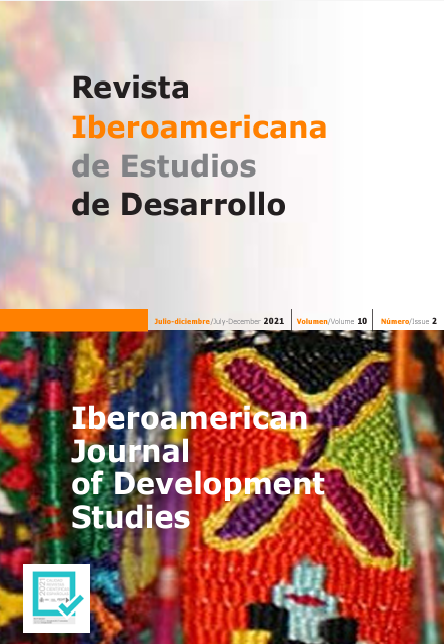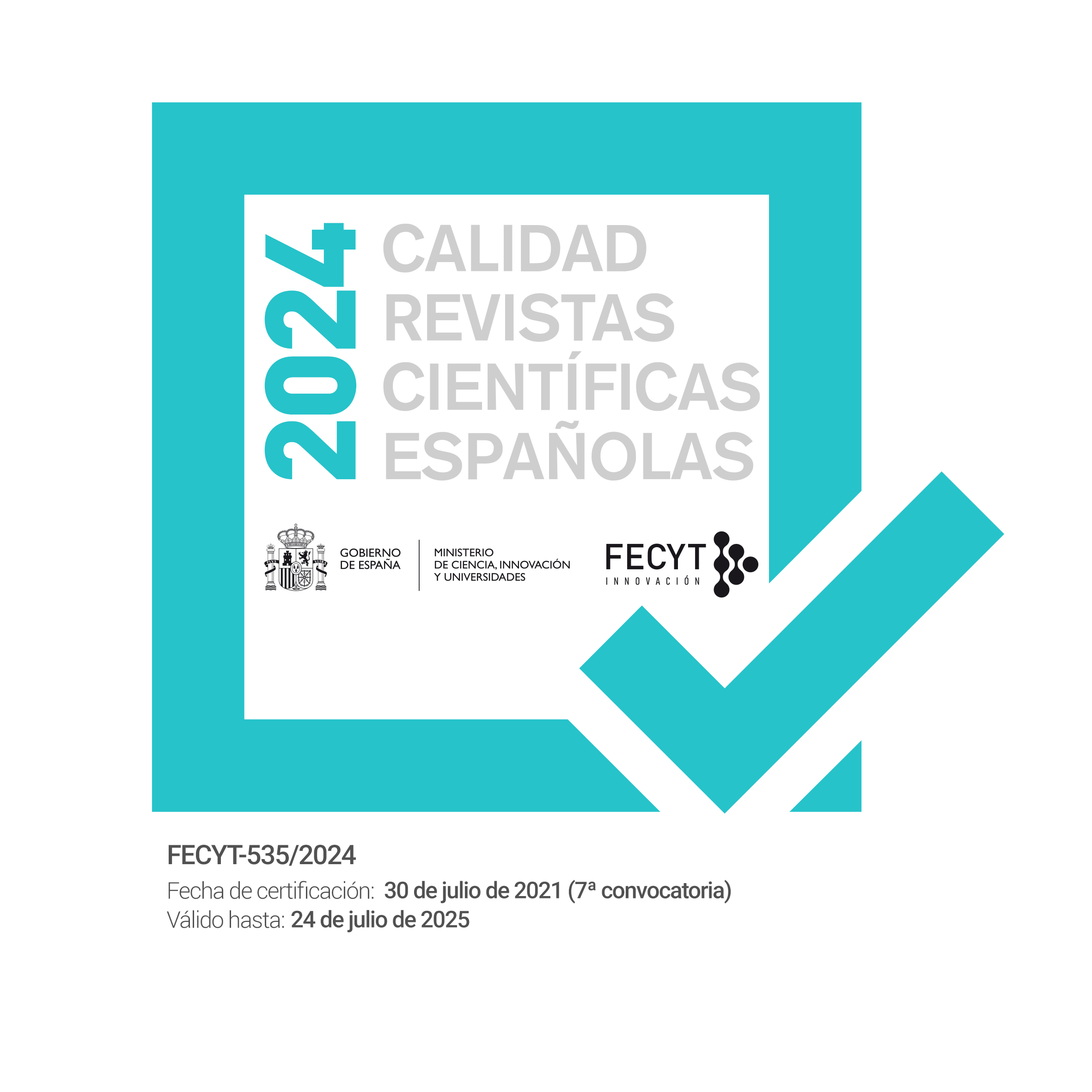Comparative analysis of competitiveness and knowledge-technological network in two shrimp producing groups in Mexico
DOI:
https://doi.org/10.26754/ojs_ried/ijds.569Keywords:
knowledge of social networks, innovation, shrimp farming, AhomeAbstract
This study is to compare the knowledge-technological flow networks to the competitiveness in two shrimp producing groups from the municipality of Ahome (Sinaloa). It has focused on an analysis of social networks and the information was obtained by the application of a survey to a
sample of 60 shrimp producing companies (7 belongs to Sinaloa Aquaculture Cluster and the 53 left belong to the social and private sector). It was found that in the Sinaloa Aquaculture Cluster the network indicators and the competitiveness scale were higher than the rest of the farms. This
means that there is a greater transfer of information between the actors, and they also play a key role within the structure, as well as the limited size of the population in the organizations that make up the cluster shrimp farming as well as being focused on geographic and sectorial ambits. For that,
is not possible to assume a causal relation and generalize the findings neither. Unity and strategic organization are key factors for this type of productive articulations, as they constitute an important source of social welfare and have a favorable impact on regional development.
Downloads
References
AGUILAR-GALLEGOS N, MARTÍNEZ-GONZÁLEZ E, AGUILAR-ÁVILA J, SANTOYO-CORTÉS H, MUÑOZ-RODRÍGUEZ M, GARCÍA-SÁNCHEZ E (2016). Análisis de redes sociales para catalizar la innovación agrícola: de los vínculos directos a la integración y radialidad. Estudios Gerenciales 32(140):197-207. https://doi.org/10.1016/j.estger.2016.06.006, access January 28, 2020.
BECERRA F, SERNA H, NARANJO J (2013). Redes empresariales locales, investigación y desarrollo e innovación en la empresa. Clúster de herramientas de Caldas, Colombia. Estudios Gerenciales (29)127:247-257. http://dx.doi.org/10.1016/j.estger.2013.05.013, access January 28, 2020.
BELTRÁN C (2017). Innovación en el Sector Acuícola. Ra Ximhai 13(3):351-364.
BONALES J, GALLEGOS E (2014). Redes de innovación del sector limonero del Estado de Michoacán. Red Internacional de Investigadores en Competitividad 8(1):585-603.
BREZNIK K (2016). Using social network analysis to identify innovation clusters. International Journal of Innovation and Learning 19(3):272. https://doi.org/10.1504/IJIL.2016.075654, access January 28, 2020.
CAPÓ-VICEDO J, EXPÓSITO-LANGA M, MASIÁ-BUADES E (2007). La importancia de los Clúster para la Competitividad de las PYME en una Economía Global. Revista Eure XXXIII(98):119-133.
CONAPESCA (COMISIÓN NACIONAL DE ACUACULTURA Y PESCA) (2017). Anuario Estadístico de Acuacultura y Pesca. https://www.gob.mx/conapesca/documentos/anuario-estadistico-de-acuacultura-y-pesca , access January 28, 2020.
CORRALES S (2007). Importancia del clúster en el desarrollo regional actual. Frontera Norte 19(37):173-201.
FAO (2016). El estado mundial de la pesca y la acuicultura 2016. Contribución a la seguridad alimentaria y la nutrición para todos. Roma, 224 pp.
GILES A, GEORGIOU O, DETTMANN P (2015). Betweenness centrality in dense random geometric networks. IEEE International Conference on Communications (ICC) 8-12 June 2015, London. https://ieeexplore.ieee.org/document/7249352, access January 28, 2020.
JANSEN JJP, VAN DEN BOSCH FAJ, VOLBERDA HW (2005). Managing potential and realized absorptive capacity: how do organizational antecedents matter? Academy of Management Journal 48(6):999-1015.
KLEINBERG J (1999). Authoritative Sources in a Hyperlinked Environment. Journal of the ACM 46(5):604-632.
KOBAYASHI M, MSANGI S, BATKA M, VANNUCCINI S, DEY MM, ANDERSON JL (2015). Fish to 2030: The Role and Opportunity for Aquaculture, Aquaculture Economics & Management 19(3):282-300. https://doi.org/10.1080/13657305.2015.994240, access June 6, 2020.
LEÓN JIB, GUTIÉRREZ LVL, CARRAZCO JCE (2019). Análisis comparativo de la red de flujos de conocimiento e información tecnológica en dos regiones líderes en el cultivo de camarón en México. Revista Facultad de Ciencias Económicas 27(2):9-32. https://doi.org/10.18359/rfce.3953, access January 28, 2020.
LESKOVEC J, FALOUTSOS C (2006). Sampling from large graphs. In: Proceedings of the 12th ACM SIGKDD International Conference on Knowledge Discovery and Data Mining. Philadelphia (USA): Association for Computing Machinery.
LUNDVALL BÅ (1992). Introduction. In: Lundvall BÅ (ed.). National Systems of Innovation toward a Theory of Innovation and Interactive Learning. Pinter Publishers. London, pp. 1-19.
MITCHELL JC (1969). Social Networks in Urban Settings. Manchester University Press, Manchester.
NAGLES N (2007). La gestión del conocimiento como fuente de innovación. Revista Escuela de Administración de Negocios (61):77-87.
PIGATTO G, MARTINELLI R, RAMOS T, ISTVAN F (2020). Competitiveness and social network of Brazilian fish farmers. Journal of Agribusiness in Developing and Emerging Economies 10(1). https://doi.org/10.1108/JADEE-04-2019-0056, access May 7, 2020.
PORTER ME (1990). The Competitive Advantage of Nations. Free Press, New York.
PORTER ME (1998). Clusters and New Economics of Competition. Harvard Business Review 76:77-90. https://www.academia.edu/41964732/Clusters_and_the_New_Economics_of_Competition , access April 10, 2020.
PORTER ME (1999). Los clusters y la competencia. Gestión 4(1):158-174.
PORTER ME (2000). Location, competition, and economic development: local clusters in a global economy. Economic Development Quarterly 14(1):15-34.
PUTNAM R (2002). Solo en la bolera: colapso y resurgimiento de la comunidad norteamericana. Galaxia Gutenberg, Barcelona.
SANZ L (2003). Análisis de redes sociales: o cómo representar las estructuras sociales subyacentes. Apuntes de ciencia y tecnología 7:21-29.
STEINMUELLER WE (2002). Las economías basadas en el conocimiento y las tecnologías de la información y la comunicación. Revista Internacional de Ciencias Sociales 171:1-17.
TEPIC M, TRIENEKENS JH, HOSTE R, OMTA SW (2012). The Influence of Networking and Absorptive Capacity on the Innovativeness of Farmers in the Dutch Pork Sector. The Influence of Networking and Absorptive Capacity on the Innovativeness of Farmers in the Dutch Pork Sector. International Food and Agribusiness Management Review 15(3):1-34.
WOODS J, GALBRAITH B, HEWITT-DUNDAS N (2019). Network Centrality and Open Innovation: A Social Network Analysis of an SME Manufacturing Cluster. IEEE Transactions on Engineering Management. https://doi.org/10.1109/TEM.2019.2934765, access March 7, 2020.
Downloads
Published
How to Cite
Issue
Section
License
Copyright (c) 2021 José Crisóforo Carrazco-Escalante, Eduardo Leyva-León, Jorge Inés León-Balderrama

This work is licensed under a Creative Commons Attribution-NonCommercial-NoDerivatives 4.0 International License.








